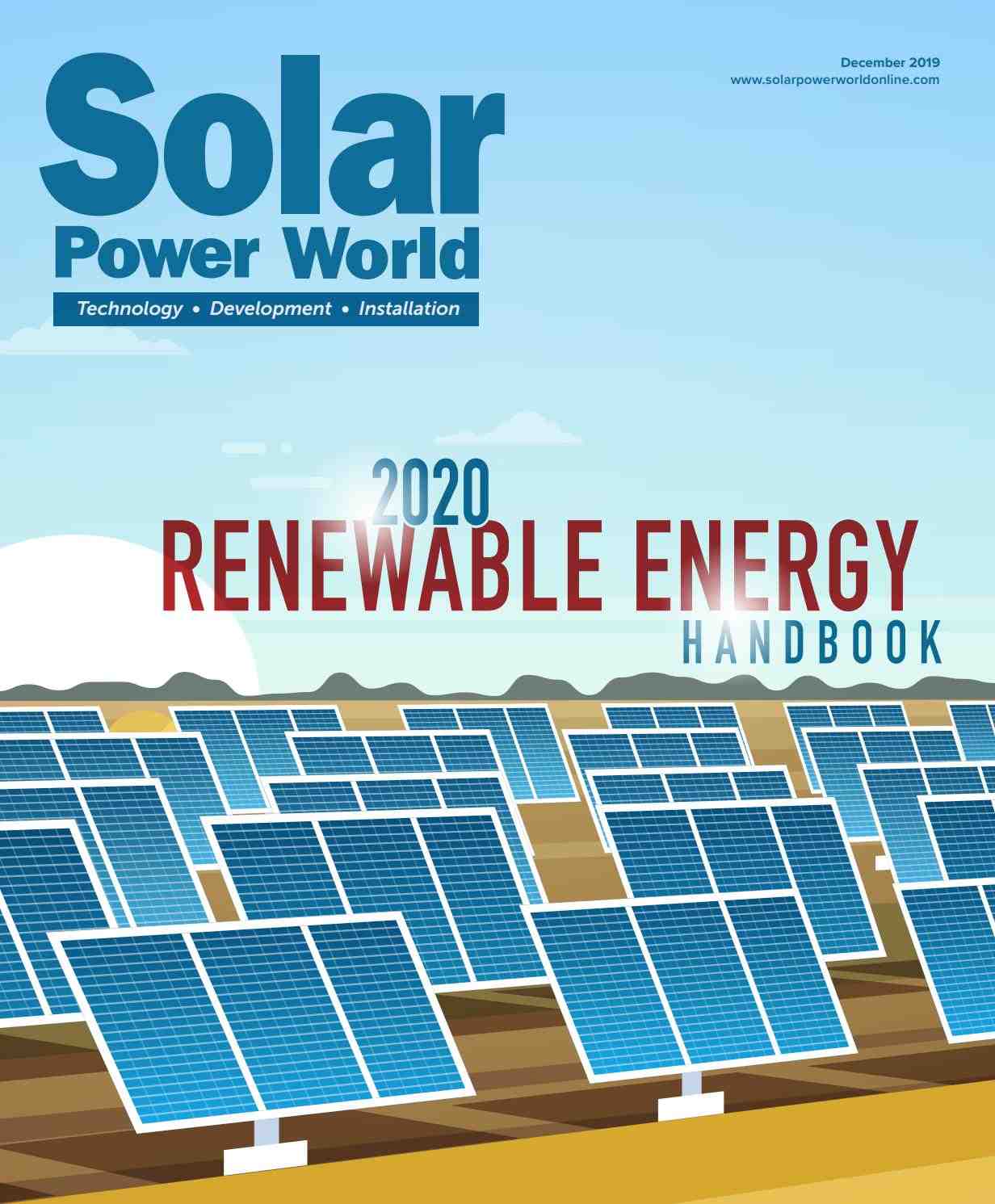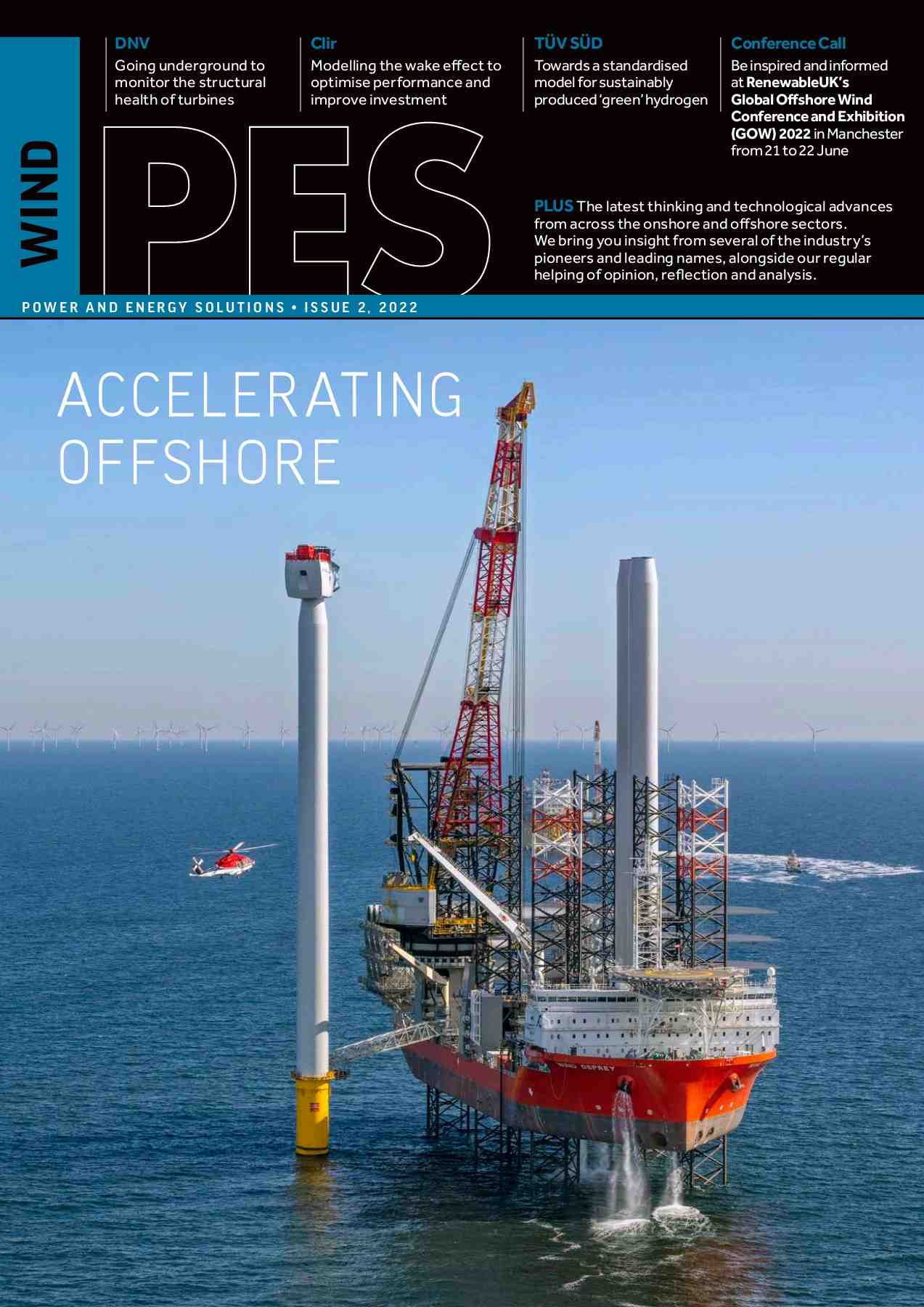The Redstone facility in Northern Cape will use molten salt to store solar energy and supply electricity to 200,000 homes during peak demand
, / PRNewswire / – The Timken Company (NYSE: TKR; www.timken.com), a global industry leader in designed bearings and power transmission products, has been selected as the exclusive supplier of advanced precision drives for the Redstone solar thermal energy. project in Northern Cape, South Africa. BrightSource Energy chose Timken’s solar tracking technology, developed by its Cone Drive business, to properly position Redstone’s heliostat mirrors to reflect the sun’s rays. The facility will store the thermal energy it collects in molten salt and convert it into electricity to deliver to South African consumers day and night.
“Our experience in application engineering is a differentiating factor that customers look for in a partner,” said Kurt Gamelin, president of Cone Drive. “We work hand-in-hand with world-leading solar suppliers and developers such as BrightSource, offering innovative technology and solutions that help advance their products. These close collaborations lead to improved performance, longer product life and reliable operations for the customers we serve. It is gratifying to know that our engineering experience is helping to create a more efficient and resilient world. “
It is expected to begin commercial operations by the end of 2023, Redstone is capable of generating up to 100 MW, South Africa’s largest renewable energy project to date. The facility is completely emission-free, with no need for natural gas or safety oil. In addition, Redstone significantly reduces water consumption for cooling by using an efficient, low-water dry cooling system.
Timken’s contributions to Redstone demonstrate its commitment to advancing environmental sustainability through product innovation, operational excellence and technology. The company has invested heavily in research and development for the solar energy market sector, building a strong manufacturing, engineering and testing capacity in both the United States and China.
Renewable energy, which consists of solar and wind, is Timken’s largest end-user sector, accounting for approximately 12 percent of the company’s total sales in 2021.
The Timken Company (NYSE: TKR; www.timken.com) designs a growing portfolio of designed bearings and power transmission products. With more than a century of knowledge and innovation, we continuously improve the reliability and efficiency of global machinery and equipment to advance the world. Timken recorded $ 4.1 billion in sales in 2021 and employs more than 18,000 people worldwide, operating from 42 countries. Timken has been recognized as one of America’s most responsible companies by Newsweek, the most ethical companies in the world® by Ethisphere and America’s best employers, the best employers for new graduates, and the best women employers for Forbes.
Media Relations: Scott Schroeder234.262.6420 [email protected]
Investor Relations: Neil Frohnapple234.262.2310 [email protected]
How much energy does a 1 megawatt solar farm produce?

On average, in the US, the solar capacity factor is 24.5%. This means that solar panels will generate 24.5% of their potential production, assuming the sun shines perfectly 24 hours a day. 1 megawatt (MW) of solar panels will generate 2,146 megawatts an hour (MWh) of solar energy per year.
How many houses can a 1 MW solar farm power? To put this figure into perspective, the Solar Energy Industries Association (a U. Read also : Why is solar energy good and bad ?.S. trade association) estimates that on average 1 megawatt of solar power generates enough electricity to meet the needs of 164 U.S. households.
How much electricity does a solar farm produce?
How profitable are solar farms? As a general rule, 1 acre of solar panels produces about 351 MWh of electricity per year. The actual benefit depends on the country’s irradiance and state / location (maximum hours of sunshine), but the average is about $ 14,000.
How much energy does a solar farm produce per day? Read also : How is solar energy stored for later use ?.
The solar farm produces approximately 200 MW per day.
How many kWh does a solar farm produce?
Solar Farm 2 o Estimated annual electricity production: 1.9 million kilowatt hours (kWh) â € ¢ The system has a total of 5,236 modules with a total of 374 module chains.
How much energy does a solar farm create?
Most solar farms produce more than a million watts, so the abbreviation “MW” (megawatt) is used to express the size of a solar farm.
How much power does a solar farm produce in a day?
The solar farm produces approximately 200 MW per day.
How many gigawatts does a solar farm produce?
A large fixed-slope solar photovoltaic plant that generates 1 gigawatt-hour (GWh) per year requires, on average, 2.8 hectares for solar panels. This means that a solar plant that provides all the electricity for 1,000 homes would require 32 hectares of land.
How much power does a 1 MW solar farm produce?
1 megawatt (MW) of solar panels will generate 2,146 megawatts an hour (MWh) of solar energy per year.
Do solar PV farms generate power 24 hours a day?
Its concentrated solar plant, Crescent Dunes in Nevada, has become the world’s first solar power plant that can supply energy continuously 24 hours a day. In addition, it produces absolutely no emissions.
How big is a 1 megawatt solar farm?
A 1-watt solar power plant needs about 100,000 square feet, which is about 2.5 acres. Due to the fact that large ground-mounted photovoltaic solar farms require space for other accessories, the total land required for a 1 MW solar power plant will be about 4 hectares.
How many acres is 1 MW of solar?
A conservative estimate of the solar development footprint is that it takes 10 acres to produce one megawatt (MW) of electricity. This estimate takes into account the development of the site around the solar panels, including maintenance and access to the site.
How large is a 1mW solar farm?
For a typical solar installation, the general rule is that for every 1 kW of solar panels needed, the area needed is approximately 100 square feet. This means that for a 1 mW photovoltaic solar power plant, the required area is about 2.5 acres or 100,000 square feet.
What does a 1 MW solar farm mean?
1 MW = 1,000,000 watts A solar developer might say, “We’re building a 25 MW project,” which means this particular farm can generate up to 25,000,000 watts of energy at a time (at noon). noon). a sunny day).
Are solar farms noisy?

Let us first consider the noise of solar farms. A key study (4) found that the average noise 10 feet from the face of the inverter ranged from 48 to 72 decibels. At 150 feet, the study showed that noise normally did not exceed background levels.
Do solar panels make noise at night? Aside from minimal inverter buzzing and the occasional new wind noise, your solar panel system should work without noise, even at night. If you experience any noise or disturbance (especially excessive noise), we recommend that you check the system as soon as possible.
What are the disadvantages of solar farms?
List of Solar Farm Controls
- They take up a lot of space. …
- Output levels may be affected by weather conditions. …
- It can negatively affect the local environment. …
- Solar farms are expensive to build. …
- Energy storage costs can be expensive.
What are the dangers of living near a solar farm?
Electricity from solar panels and transmission to the power grid emits extremely weak electromagnetic fields. Exposure to low-level electromagnetic fields has been widely studied and there is no evidence that it is harmful to human health, according to the World Health Organization (WHO).
Why are people against solar farms?
Solar farms can also reinforce inequality. Subsidies and carbon taxes have made cleaner energies cheaper. In Germany, there has been a backlash against renewable energy as opposed to the high costs these measures impose on the poorest consumers who remain dependent on utilities and the grid.
Are solar farms quiet?
The most visible part of the solar installation are the large solar panels and these in fact do NOT produce sound. However, there is equipment that generates noise in solar installations and is discreetly placed on small concrete pads.
How much noise does a solar farm make?
There will be standard construction noise during the construction period, but there will be no panel noise once the project is up and running. Only one device on the site emits a buzzing sound, but it is at a very minimal level.
Do solar farms make any noise?
Are solar energy projects noisy? The short answer is no: utility-scale solar energy projects are not noisy. Here’s the long answer: The Massachusetts Center for Clean Energy conducted a study of noise and magnetic electric fields in utility-scale solar installations operating at optimum capacity.
Is solar energy silent?
Quiet operation Generators or power plants and even environmentally friendly devices such as heat generators and wind turbines make noise while operating. On the contrary, solar panels do not produce any noise as they take advantage of the energy of sunlight and then generate heat / electricity.
What is it like living next to a solar farm?
Living next to a solar farm can have some drawbacks, such as disruption of local habitat, reduced cropland causing poor views, and potential electromagnetic waves from solar batteries. Although no energy source is perfect, solar energy is known as the safest energy source.
Does living next to a solar farm decrease property value?
McGarr’s studies found no negative impact consisting of the value of residential property that could be attributed to nearby solar farms.
Do solar farms put off radiation?
Do solar panels emit EMF radiation? Although solar panels emit EMF radiation, it is quite small and probably not dangerous. The real problem is that the solar panel system, or photovoltaic system, creates raw electricity that eventually radiates EMF radiation into the home.
What are the negative effects of a solar farm?
Ecological Impacts The cleaning and use of large tracts of land for solar energy installations can negatively affect native vegetation and wildlife in many ways, including habitat loss; interference with rainfall and drainage; or direct contact causing injury or death.
What is the highest wattage solar panel available 2021?

The 10 most efficient solar panels of 2021
- SunPower Maxeon 3 (400 W 22.6%)
- LG Neon R (380 W 22.0%)
- REC Alpha (380 W 21.7%)
- Longi Solar Hi-Mo 4 (375 W 20.6%)
- Trina Solar Honey M DEO8 (375 W 20.5%)
- Solaria Power XT (370 W 20.5%)
- Jinko Solar Tiger Pro – 6Rl3 (390 W 20.4%)
- Canadian Solar HiDM CS1H-MS (345 W 20.4%)
Which solar panel has the best performance? Which solar panels are the most efficient? SunPower Maxeon offers some of the most efficient and high-performance solar panels today. The 415-watt SunPower residential solar panel has one of the highest power outputs of the panels in this guide.
Is there a 400 watt solar panel?
Several major solar panel brands, such as LG and SunPower, now offer 400-watt solar panels for home and commercial use. However, as of 2022, 400-watt solar panels are still of a rare size in residential solar power installations, with most consumers opting for panels in the 300-350-watt range.
How many amps will a 400 watt solar panel produce?
In the specifications of your solar panel, you will find the circuit current and the circuit voltage at their maximum values. In general, a 400 watt panel will be 40 volts and 10 amps, equivalent to 400 watts!
What can you power with 400 watt solar system?
A 400-watt solar panel with full irradiance will work with a 360-watt (constant) AC charge. This value takes into account the 10% losses of the investor. This includes a combination of appliances such as televisions, laptops, slow cookers and ceiling fans. A 400 watt solar panel can run a small refrigerator with a 120 Ah battery.
How much can a 400 watt solar panel power?
Yes, a 400 watt solar panel can work with a small refrigerator (80 watts) or a DC refrigerator (170 watts). However, you will need a battery to achieve this; and you can expect an average duration of about 14.4 hours for an 80 W refrigerator and 6.8 hours for a DC refrigerator in a day.
Is there a 1000 watt solar panel?
Again, there is no 1000 watt solar panel. To obtain 1 kW of solar energy, you will need to join a few panels to achieve the desired capacity, which we will see below in this article.
How many solar panels is 1000 watts?
Solar panels generate 1,000 watts of power per square meter when exposed to full sunlight. Depending on where you live, these hours can vary greatly. If you only have 3 hours of full sun in a northern winter climate, you can only power your 1000 watt light bulb for 3 hours per square meter of solar panels in your home.
What is the highest watt solar panel available?
As of March 5, 2019, the highest power solar panel available is the 415-watt SunPower residential solar panel. With an innovative efficiency of 22.3%, the SunPower 415 is the highest efficiency solar panel commercially available.
What will a 1200 watt solar system run?
& # xd83c; & # xdf1e; [Ideal output power: 5 kWh / day]: this complete system of 1200 W solar panels generates about 5 kWh per day in 4 hours of sunlight, very suitable for home, indoor, cabin, RV or other power backpack. , and provides enough power for air conditioning, TV, refrigerator, coffee maker, microwave and other devices of 110 V AC …
What is the highest wattage solar panel you can buy?
As of March 5, 2019, the highest power solar panel available is the 415-watt SunPower residential solar panel. With an innovative efficiency of 22.3%, the SunPower 415 is the highest efficiency solar panel commercially available.
Is a higher wattage solar panel better?
High-watt solar panels are worth considering for your solar power system, have a higher overall efficiency rating, are usually part of the newer series lines from their respective manufacturers, and can reduce the your initial investment cost for your solar array.
How big is a 1 megawatt solar farm?

A 1-watt solar power plant needs about 100,000 square feet, which is about 2.5 acres. Due to the fact that large ground-mounted photovoltaic solar farms require space for other accessories, the total land required for a 1 MW solar power plant will be about 4 hectares.
What does a 1 MW solar farm mean? 1 MW = 1,000,000 watts A solar developer might say, “We’re building a 25 MW project,” which means this particular farm can generate up to 25,000,000 watts of energy at a time (at noon). noon). a sunny day).
How many acres is 1 MW of solar?
A conservative estimate of the solar development footprint is that it takes 10 acres to produce one megawatt (MW) of electricity. This estimate takes into account the development of the site around the solar panels, including maintenance and access to the site.
How many megawatts is an acre of solar?
As a general rule, 1 acre of solar panels produces about 351 MWh of electricity per year. The actual benefit depends on the country’s irradiance and state / location (maximum hours of sunshine), but the average is about $ 14,000. The cost of installing 1 acre of solar panels is about $ 450,000.
Is 5 acres enough for a solar farm?
Other sources suggest that between 6 and 8 hectares are needed for every megawatt of energy produced to build a profitable solar farm.
How many acres is a 1 MW solar farm?
The type of solar farm developers who want to build ranges from one megawatt to hundreds of megawatts. As a general rule, a 1 MWac (AC) solar farm requires 4-7 acres of land. The key variable in this 4-7 hectare range is the sun that shines in your area.
How large is a 1mW solar farm?
For a typical solar installation, the general rule is that for every 1 kW of solar panels needed, the area needed is approximately 100 square feet. This means that for a 1 mW photovoltaic solar power plant, the required area is about 2.5 acres or 100,000 square feet.
What is the average size of a solar farm?
The average solar installation in the community has a capacity of 2.0 MW. The growth of small utilities is expected to continue until 2020.
